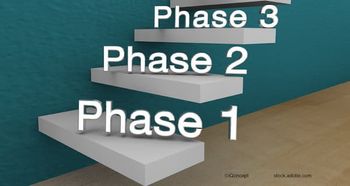
- Ophthalmology Times Europe January/February 2025
- Volume 21
- Issue 1
- Pages: 7 - 10
IOL design puts a new spin on vision
Advancements in lens technology reflect the growing popularity of multifocal lenses
Multifocal lenses, particularly trifocal IOLs, have been the gold standard for those seeking a full range of vision, especially as more patients adopt active lifestyles. These lenses aim to provide glasses-free vision at near, intermediate, and distance ranges, but they come with limitations, such as visual disturbances due to halos and glare.
To address this, extended depth of focus (EDOF) lenses were developed to offer good intermediate visual acuity with fewer visual disturbances, while enhanced monofocal IOLs aimed to improve intermediate vision while maintaining high-quality distance vision. Despite these advancements, both EDOF and enhanced monofocal IOLs often fail to provide the comprehensive glasses-free vision that many patients desire, particularly for near tasks. These challenges impact patient satisfaction after surgery.
The challenge of dysphotopsia
While trifocal IOLs enhance vision at various distances, many patients report experiencing visual disturbances—such as halos and glare—especially in low-light or night-time conditions. These disturbances, collectively known as dysphotopsia, can vary in subjective severity based on individual tolerance, making it challenging for surgeons to predict the degree of disturbance that each patient may experience. The light-splitting optics in trifocal and in some EDOF IOLs reduce contrast sensitivity, further impairing vision in dim settings. This can impact quality of life, particularly in situations where pupil size is increased, which can exacerbate visual disturbances.1-4
For intolerable dysphotopsia, the traditional treatment algorithm involves a long road of trial and error for patients, starting with an extensive evaluation and management of any concomitant causes of visual disturbance.5 Patients may require glasses or laser refractive surgery for residual refractive error, or laser capsulotomy for posterior capsule opacification. Patients with large pupils may need to administer miotic drops to reduce straylight. If symptoms persist or if symptoms are solely caused by multifocal optics, IOL exchange remains the only solution. While surgery is effective in resolving dysphotopsia, it can be complicated by IOL adhesion to the capsule or prior capsulotomy, which can lead to capsular tears or vitreous loss.6
Researchers have tried to understand what factors drive patient satisfaction with IOLs. A study by Schallhorn et al identified several key factors essential for daily activities across different distances, including binocular visual acuity and glare.7 The early results of the multicentre RayPRO (Rayner) study presented at the ESCRS 2024 congress conclude that photic phenomena like halos and glare can have a greater influence on satisfaction than the ability to be spectacle independent, and suggest the impact of dysphotopsia on satisfaction may increase over time. This underscores the need for IOL designs that effectively balance a broad range of vision with visual comfort.8
Together, these findings suggest that optimal IOL design should address a comprehensive set of patient needs by ensuring sharp vision across different distances and minimising dysphotopsia to enhance overall quality of life. Reducing halos and glare, in particular, is associated with higher satisfaction following IOL implantation. This need has driven innovations in IOLs that deliver comprehensive vision with fewer disturbances.
Innovative designs
Recent years have seen significant advancements in the IOL industry,
with a focus on high-quality visual outcomes and minimal side effects. Non-diffractive EDOF IOLs are intended to mitigate dysphotopsia commonly associated with multifocal lenses, though they may provide less sharp near vision.9 Adjustable IOLs, such as light-adjustable lenses (LALs), allow for postoperative fine-tuning,10 while hybrid multifocal lenses combining refractive and diffractive optics are gaining popularity for their balanced visual quality across a broad range.11
Enhanced monofocal or monofocal-plus IOLs, such as the Tecnis Eyhance (Johnson & Johnson Vision) and the RayOne EMV (Rayner), represent next-generation alternatives in patients who have higher expectations of visual quality. These non-diffractive IOLs reduce dysphotopsia similarly to conventional monofocal IOLs, while increasing the depth of focus by various mechanisms, including the modulation of refractive power or spherical aberrations across the IOL optic. Intermediate vision is enhanced while achieving good distance vision, which provides functional vision for most daily activities.12 The near vision performance of enhanced monofocal IOLs can be further improved with the use of monovision.13 Accommodating IOLs that can change their shape and power similar to the natural crystalline lens are being investigated but they remain experimental at present.14
The RayOne Galaxy IOL introduces a new solution as the world’s first spiral IOL, designed with artificial intelligence to deliver high visual quality across a full range of vision, while minimising dysphotopsia, especially in low-light conditions. Unlike traditional trifocal or EDOF lenses that use diffractive or aspheric optics, the RayOne Galaxy features a unique non-diffractive spiral optic design. The non-diffractive spiral progressively elongates focus, creating a smooth and continuous variation in optical power along the defocus curve, with maximum light transmission to the retina. By enhancing visual clarity and minimising disturbances, the RayOne Galaxy shows promise for improving patient satisfaction after implantation.
Early clinical experience
The Vision Scotland team staff were some of the first surgeons in the world to implant the RayOne Galaxy. We collaborated with colleagues in a multicentre evaluation to assess the new spiral IOL’s performance in real-world settings. This evaluation spanned 10 clinics, each including 10 patients eligible for bilateral premium IOL implantation (RayOne Galaxy and RayOne Galaxy Toric).
We assessed visual acuity, subjective refraction and the defocus curve, and used a halo and glare simulator, with follow-ups at 1 and 3 months postoperatively. Early outcomes from the evaluation show high patient satisfaction, and good uncorrected and corrected monocular vision across all distances (39 patients at 1-month postoperative follow-up):
- Distance vision: 0.09 logMAR (uncorrected), –0.01 logMAR (distance-corrected)
- Intermediate vision: 0.07 logMAR (uncorrected and distance-corrected)
- Near vision: 0.12 logMAR (uncorrected), 0.10 logMAR (distance-corrected)
Binocular vision outcomes were equally satisfactory:
- Distance vision: 0.02 logMAR (uncorrected), –0.04 logMAR (distance-corrected)
- Intermediate vision: 0.01 logMAR (uncorrected and distance-corrected)
- Near vision: 0.06 logMAR (uncorrected), 0.04 logMAR (distance-corrected)
One month postoperatively, both sphere and cylinder decreased, with near-emmetropic subjective refraction (manifest refractive spherical equivalent –0.33 ± 0.32). The binocular defocus curve showed visual acuity better than 0.2 logMAR across a range of nearly 4.0 D, with a smooth plateau from +0.5 D to –2.5 D. This defocus profile contrasts with the wave-like pattern typically seen in trifocal IOLs (Figure 1).
Vision simulator tests revealed fewer halos and less glare compared with published data on diffractive trifocal IOLs,15 consistent with a preclinical study by Amon et al (presented at ESCRS 2024).16 This study used the Real Artificial Lens Vision (RALV) device to compare the RayOne Galaxy (spiral IOL), RayOne Trifocal, and RayOne EMV (enhanced monofocal IOL).
The results indicated that the RayOne Galaxy IOL provided an extended visual range comparable to a trifocal IOL, with better contrast sensitivity than diffractive trifocals and significantly fewer halos, with halo size closer to enhanced monofocals.13 In our clinical evaluation, one-third of patients reported no halos, and 74% reported no glare. Among those who did experience visual symptoms, most described them as mild (Figure 2).
As cornea and refractive surgeons, we find the early outcomes with the RayOne Galaxy IOL incredibly promising, particularly in how it enhances quality of life by balancing sharpness of near, intermediate, and distance vision with reduced halos and glare. This feature directly addresses a common patient concern: achieving spectacle independence without compromising night vision quality, which has often been an issue with multifocal IOLs.
Our team would recommend this lens for patients with active lifestyles who need reliable vision across all distances and are sensitive to visual artefacts. The spiral design’s unique approach to reducing dysphotopsias makes this lens a good alternative for presbyopia-correcting IOLs, offering high-quality, full-range vision and visual comfort.
Conclusion
The growing demand for multifocal lenses, particularly trifocal IOLs, underscores their potential to provide a full range of vision, though visual disturbances can impact patient satisfaction. The RayOne Galaxy IOL addresses these challenges with its novel non-diffractive spiral design, which minimises halos and glare while delivering excellent visual outcomes and a smooth, full range of vision. Early clinical results from our ongoing evaluation suggest that patients achieve clear vision across different distances with reduced visual disturbances.
References
1. Modi S, Lehmann R, Maxwell A, et al. Visual and patient-reported outcomes of a diffractive trifocal intraocular lens compared with those of a monofocal intraocular lens. Ophthalmology. 2021;128(2):197-207. doi:10.1016/j.ophtha.2020.07.015
2. Fernández J, Alfonso Sánchez JF, Nieradzik M, Valcárcel B, Burguera N, Kapp A. Visual performance, safety and patient satisfaction after bilateral implantation of a trifocal intraocular lens in presbyopic patients without cataract. BMC Ophthalmol. 2022 Aug 10;22(1):341. doi: 10.1186/s12886-022-02556-y. PMID: 35948879; PMCID: PMC9364506.
3. de Vries NE, Webers CA, Touwslager WR, et al. Dissatisfaction after implantation of multifocal intraocular lenses. J Cataract Refract Surg. 2011 May;37(5):859-65. doi: 10.1016/j.jcrs.2010.11.032. Epub 2011 Mar 11. PMID: 21397457.
4. Mencucci R, Favuzza E, Caporossi O, Savastano A, Rizzo S. Comparative analysis of visual outcomes, reading skills, contrast sensitivity, and patient satisfaction with two models of trifocal diffractive intraocular lenses and an extended range of vision intraocular lens. Graefes Arch Clin Exp Ophthalmol. 2018 Oct;256(10):1913-1922. doi: 10.1007/s00417-018-4052-3. Epub 2018 Jul 6. PMID: 29980919.
5. S Woodward MA, Randleman JB, Stulting RD. Dissatisfaction after multifocal intraocular lens implantation. J Cataract Refract Surg. 2009 Jun;35(6):992-7. doi: 10.1016/j.jcrs.2009.01.031.
6. Al-Shymali O, Alió Del Barrio JL, McAlinden C, Canto M, Primavera L, Alio JL. Multifocal intraocular lens exchange to monofocal for the management of neuroadaptation failure. Eye Vis (Lond). 2022 Nov 1;9(1):40. doi: 10.1186/s40662-022-00311-4.
7. Schallhorn SC, Hettinger KA, Teenan D, Venter JA, Hannan SJ, Schallhorn JM. Predictors of patient satisfaction after refractive lens exchange with an extended depth of focus IOL. J Refract Surg. 2020 Mar 1;36(3):175-184. doi: 10.3928/1081597X-20200211-01. PMID: 32159822.
8. Botta J, Barsam A, Dmitriew A, Zaldivar R, Wiley WF, Windsor S. Factors influencing outcome satisfaction after cataract surgery: patient-reported insights from the RayPro database. BMC Ophthalmol. 2024;24(1):528. Published 2024 Dec 18. doi:10.1186/s12886-024-03800-3
9. Asena L, Kırcı Dogan İ, Oto S, Dursun Altınors D. Comparison of visual performance and quality of life with a new nondiffractive EDOF intraocular lens and a trifocal intraocular lens. J Cataract Refract Surg. 2023 May 1;49(5):504-511. doi: 10.1097/j.jcrs.0000000000001142.
10. Moshirfar M, Martin DJ, Jensen JL, Payne CJ. Light adjustable intraocular lenses: an updated platform for cataract surgery. Curr Opin Ophthalmol. 2023 Jan 1;34(1):78-83. doi: 10.1097/ICU.0000000000000911.
11. Madrid-Costa D, Cerviño A, Ferrer-Blasco T, García-Lázaro S, Montés-Micó R. Visual and optical performance with hybrid multifocal intraocular lenses. Clin Exp Optom. 2010 Nov;93(6):426-40. doi: 10.1111/j.1444-0938.2010.00518.x.
12. García-Bella J, Burgos-Blasco B, Vidal-Villegas B, Garzón N, Villanueva C, García-Feijoo J. Visual and refractive outcomes after bilateral implantation of an enhanced monofocal intraocular lens: prospective study. J Cataract Refract Surg. 2024 Jun 1;50(6):585-590. doi: 10.1097/j.jcrs.0000000000001422.
13. Zeilinger J, Kronschläger M, Schlatter A, et al. Comparing an advanced monofocal with a non-diffractive extended depth of focus intraocular lens using a mini-monovision approach. Am J Ophthalmol. 2024 Oct 28;271:86-95. doi: 10.1016/j.ajo.2024.10.014. Epub ahead of print. PMID: 39490721.
14. Where are we going with IOL technology: a review of new and potential options for cataract surgery. Modern Optometry. October 2022. Accessed January 17, 2025. https://modernod.com/articles/2022-oct/where-are-we-going-with-iol-technology
15. Kretz FT, Breyer D, Klabe K, et al. Clinical Outcomes After Implantation of a Trifocal Toric Intraocular Lens. J Refract Surg. 2015 Aug;31(8):504-10. doi: 10.3928/1081597X-20150622-01. PMID: 26274516.
16. Rayner. Pre-clinical and global evaluation. Presented at: European Society of Cataract and Refractive Surgeons 42nd Congress; September 6-10, 2024; Barcelona, Spain.
Mr Sanjay Mantry, MD, FRCS, FRCOphth
Mr Mantry is a consultant ophthalmologist with interest in cornea, cataract and refractive surgery. He is the founder and managing director at Vision Scotland.
Miss Mubeen Mahmood, BSc (Hons) MCOptom, FBDO, AFHEA
Ms Mahmood is a refractive optometrist at Vision Scotland and is also an academic optometrist based at Glasgow Caledonian University.
Mr Neil Barnes, BSc(hons) MCOptom DipTp(IP)
Mr Barnes is the head of optometry at Vision Scotland. He is an independent prescriber and has glaucoma accreditation through NESGAT (NES Glaucoma Award Training).
Financial disclosure: Mr Mantry is a consultant of Rayner.
Articles in this issue
11 months ago
Helping patients with glaucoma manage mental health11 months ago
Shifting the narrative around dry eye disease11 months ago
A new home treatment for amblyopiaNewsletter
Get the essential updates shaping the future of pharma manufacturing and compliance—subscribe today to Pharmaceutical Technology and never miss a breakthrough.







































